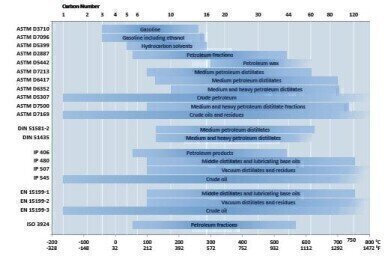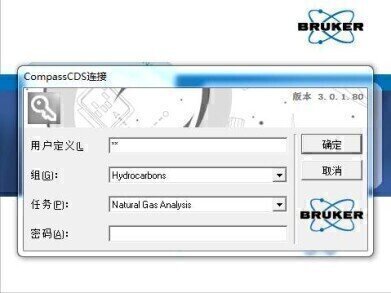Measurement and Testing
Analysis of Unconventional Oil & Bitumen by Simulated Distillation
Jun 18 2014
Crude oil is changing and the focus is now on processing oils bound to sand/tar/rock that historically were unknown, inaccessible and so required more energy to process. The refining industry is moving toward upgrading and processing this non-conventional crude feedstock. Innovative developments with the Bruker 436 GC Simulated Distillation Analyser enable the determination of the true boiling point distribution of these challenging hydrocarbon mixtures. Improved oven performance, inlet design, electronic flow control and the next generation Compass CDS 3.0 data handling software incorporates all of the ASTM, DIN, IP and ISO methods associated with Simulated Distillation analysis. For further information click here.
New Version 3.1 CompassCDS & Client Server now available in Chinese
CompassCDS is Bruker’s networked GC data acquisition and processing software for applied chemical markets. The newly released Version 3.1 now supports localization with multiple languages. CompassCDS is currently available in English and Chinese, and versions in French, Spanish, Portuguese and German will be available later this year. Controlling Bruker, Varian and other GC modules, CompassCDS interfaces bi-directionally with LIMS and SCADA systems to provide users with a fully integrated, closed-loop data handling solution designed for high-throughput industrial operations. Supporting Windows versions as well as with Virtualised and Citrix metaframe installations, CompassCDS provides operators with customisable, single screen user interfaces that simplify day-to-day operation of GCs in routine analytical labs. CompassCDS delivers multi-channel reporting, with the ability to include complex custom calculations. For more information visit click here.
Bioethanol
Biofuels have become increasingly important as alternatives to conventional fuels. Bioethanol, mainly produced by sugar fermentation, is an example of a biofuel. Ethanol has a high octane number and was originally intended to replace lead as an octane enhancer. Nowadays, ethanol is blended with gasoline to improve combustion efficiency thereby reducing polluting emissions. The most common blend is 10% ethanol and 90% petrol (E10), though the latest vehicles can operate on up to 85% ethanol and 15% petrol blends (E85). ASTM D 5501 is the method commonly used to determine the ethanol content of denatured fuel ethanol by gas chromatography. Ethanol is determined from 93 to 97 mass%. Accurate determination of ethanol and methanol according ASTM D 5501 is achieved using a Bruker SCION™ 456-GC Gas Chromatograph with CompassCDS software. Data shows that accurate repeatability means that data never exceeds the levels specified in the standard. For more information visit click here.
Digital Edition
PIN 25.1 Feb/March
March 2024
In This Edition Safety - The technology behind the ION Science Tiger XT - Safety with ammonia and LOHCs as hydrogen carriers Analytical Instrumentation - Discussion on new tribology te...
View all digital editions
Events
Apr 30 2024 Birmingham, UK
May 03 2024 Seoul, South Korea
May 05 2024 Seville, Spain
May 06 2024 Riyadh, Saudi Arabia
May 06 2024 Houston, Tx, USA




















